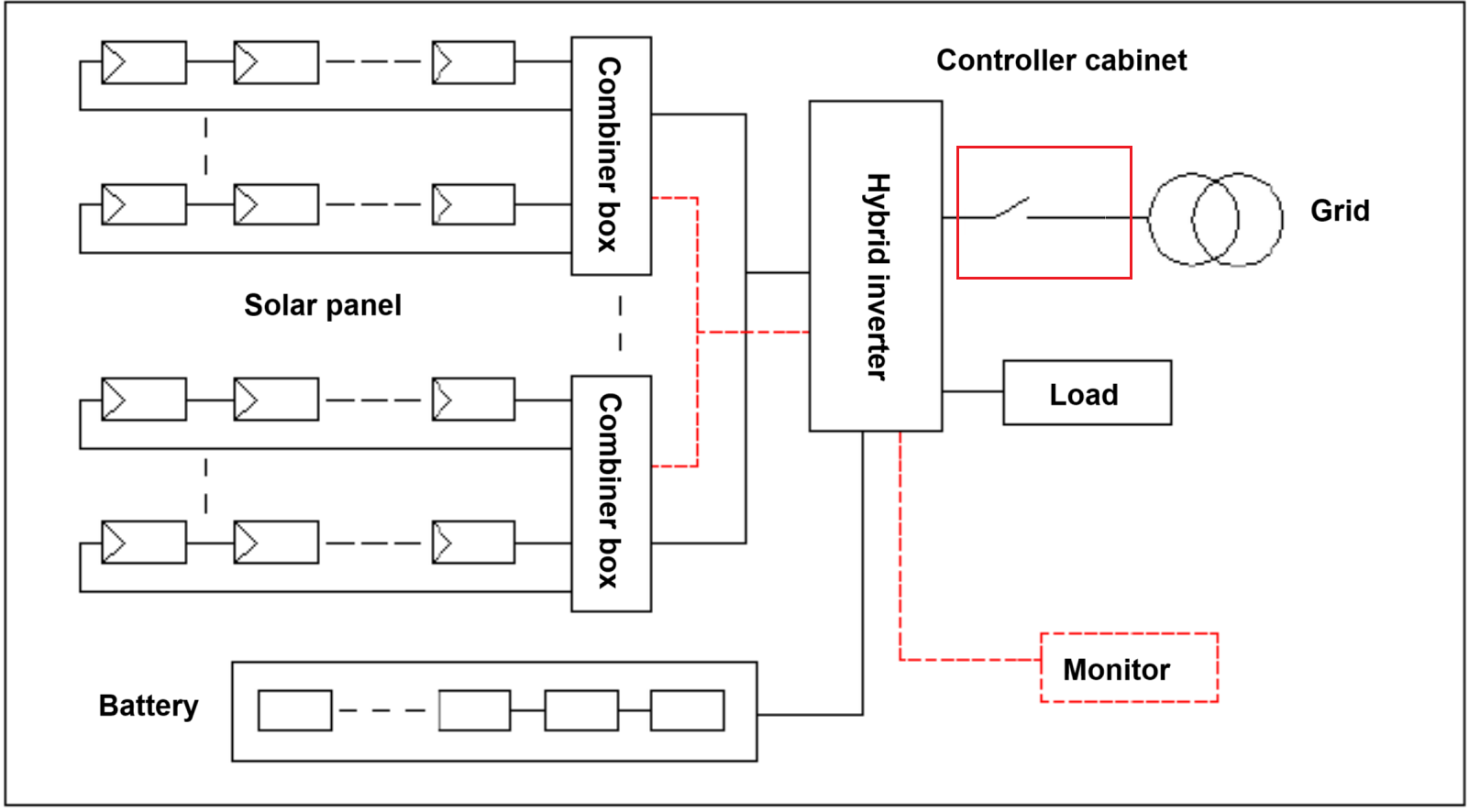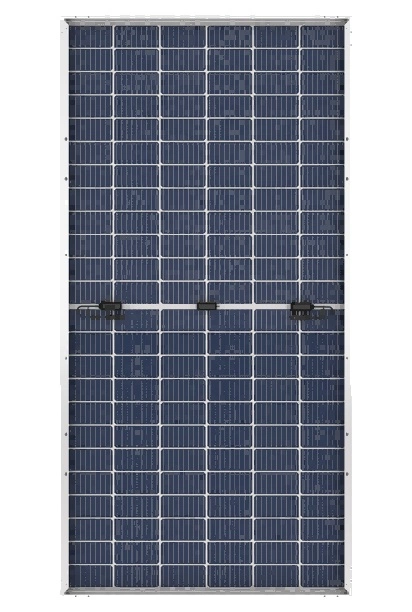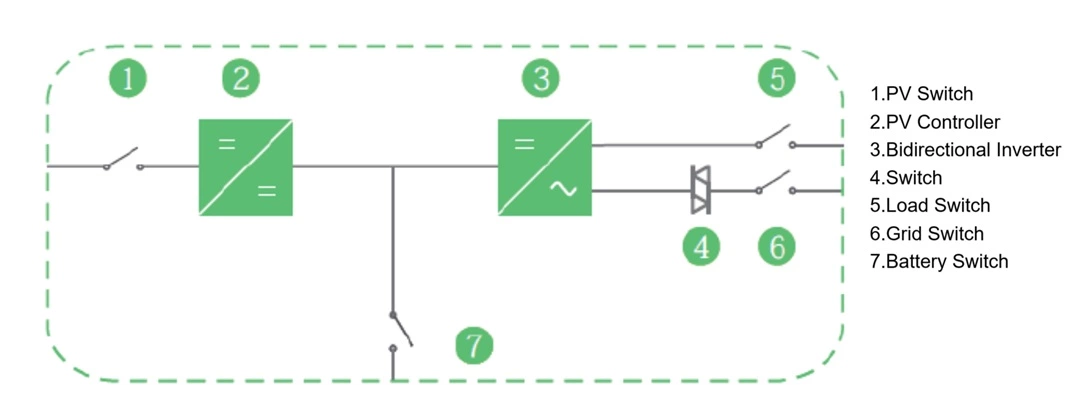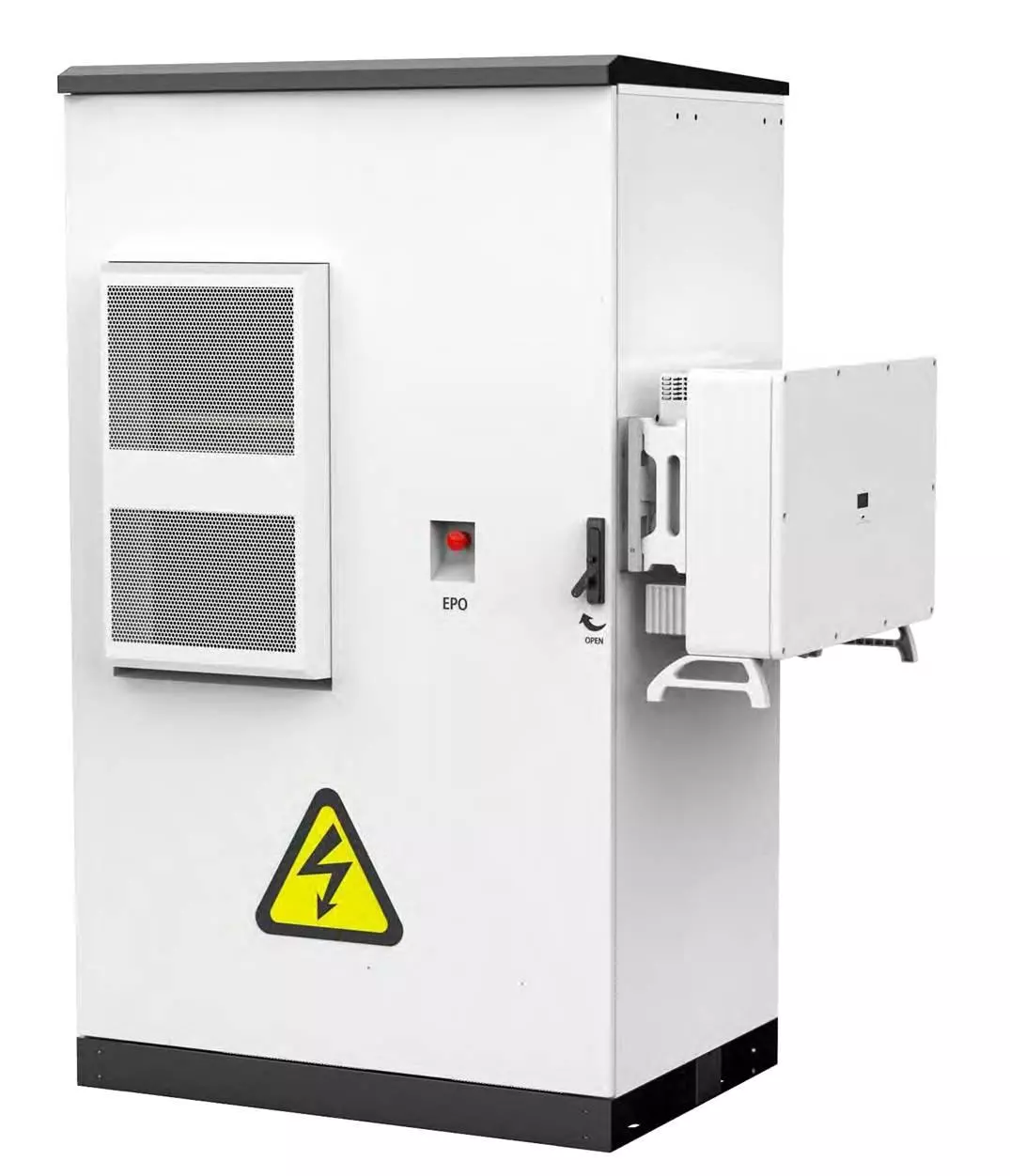Solar on- off-grid energy storage systems are widely used in factories, commercial facilities and other places with large peak-valley price differences or frequent power outages. The system is composed of photovoltaic arrays made up of solar panels, combiner boxes, hybrid inverters, solar batteries, loads, power grids, etc. PV array converts solar energy into electrical energy under the condition of sunlight, supplies power to the load through a hybrid inverter, and charges the battery pack at the same time. The excess electricity can also be fed into the power grid. When there is no light, the load is powered by the power grid. When the power grid is out of power, the battery supplies power to the load through the hybrid inverter.
I. Main Components of the System
1.1 Solar panels
It is the main component of the solar power supply system and also the most valuable part in it. Its function is to convert the radiant energy of the sun into direct current electrical energy.
1.2 Hybrid inverter
The main functions are divided into two parts: the MPPT solar controller and the bidirectional DC/AC converter. Their role is to regulate and control the electrical energy generated by the solar panels charge the battery, and provide overcharge protection and overdischarge protection for the battery. At the same time, the direct current from the components and the battery is converted into alternating current for use by AC loads. When appropriate, the power grid can also charge the battery.
1.3 Solar batteries: Its main task is to store energy to ensure the power supply for the load when the power grid is cut off.
2. Main Components
2.1 Solar panels
Solar panels are solar power generation devices that directly convert solar energy into direct current electrical energy. According to the different requirements of users for power and voltage, solar panels can be made for individual use, or several solar panels can be connected in series (to meet voltage requirements) and parallel (to meet current requirements) to form a power supply array to provide greater electrical power. The power generation of solar cells increases proportionally with the increase of sunlight intensity. It slightly decreases as the surface temperature of the component rises. As the temperature changes, the current, voltage and power of the battery components will also change. When designing the components in series, the negative temperature coefficient of the voltage must be taken into consideration.

2.2 Hybrid Inverters
Three-phase solar hybrid inverter integrated machine, adopting the new generation of all-digital control technology, pure sine wave output; The solar controller and inverter are integrated into one, making it convenient to use. It is suitable for areas with power shortages and unstable power grids, providing an economical power supply solution. The product has the following advantages:
(1) Control hybrid inverter: Integrated solar controller and inverter, simple connection, convenient to use;
(2) High efficiency, with an efficiency of over 95%, maximizing the utilization of solar energy.
(3) High reliability: The inverter adopts power frequency design, has strong overload capacity, and is suitable for impact loads such as air conditioners.
(4) Comprehensive protection functions: Battery overcharge and overdischarge protection and advanced battery management functions extend the battery life. Overload protection, short-circuit protection and other functions ensure the safe and reliable operation of equipment and loads.
(5) The LCD liquid crystal screen provides intuitive display: monitoring of multiple working operation status parameters such as photovoltaic input voltage/current, AC output voltage/current, and battery capacity.
(6) The energy storage system is compatible with both lead-acid batteries and lithium batteries, providing users with multiple options.
(7) Various charging methods such as PV charging, mains (generator) charging, and hybrid charging, as well as multiple power supply methods including battery power supply and mains power supply.
(8) It supports multiple inverters running in parallel, making power expansion convenient.
Hybrid inverter schematic and parameter table

| Item | Parameter |
| Nominal Power | 60KVA |
| Active Power | 48kW |
| Nominal Voltage | 400V |
| Voltage Range | 360V-440V |
| Frequency | 50Hz/60Hz |
| THDi | ≤3% |
| Power Factor | 0.8 (Leading)-0.8(Lagging) |
| Over Capacity | 110% ten minutes,120% one minutes |
| Max PV Input Voltage | 1000VDC |
| Max PV Power | 55kWp |
| MPPT Voltage Range | 480VDC-800VDC |
| Battery Voltage | 600-900V |
2.3 Solar Batteries
Solar batteries and related devices are an indispensable part of solar generation systems. They are mainly used to store electricity generated by solar energy and provide continuous power to loads at night, when there is insufficient sunlight or in emergencies. Common solar battery technologies include lead-acid batteries, alkaline batteries, supercapacitors and lithium batteries, each with different application ranges. Currently, the most widely used are lithium-ion batteries, especially lithium iron phosphate batteries (LFP), which perform well in solar systems due to their high safety, long life and excellent cycle performance. Since the advent of lithium battery technology in the 1980s, a variety of types have been developed, including ternary lithium, lithium iron phosphate, lithium titanate, etc.In this solution, we choose Brovolt 215 kWh lithium-ion battery cabinet.
| Item | Parameter |
| Battery Capacity | 215kWh |
| Battery Cell | LiFePO4 280Ah |
| Nominal Voltage | 768V |
| Configuration | 1P240S |
| Charge-discharge Rate | 0.5C |
| Cooling Mode | Air-cooling 3kW |
| Weight | 2200kg |
| Communication | CAN/RS484/Enternet |

3.Solution design
Solar : monocrystalline 550W, quantity 100 pieces, 20 series and 1 parallel, total power 55kW.
Hybrid inverter: power 48KW
Lithium-ion battery cabinet: 215kWh.